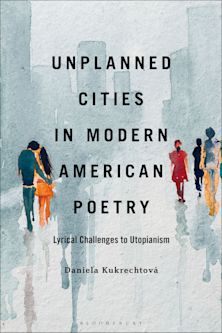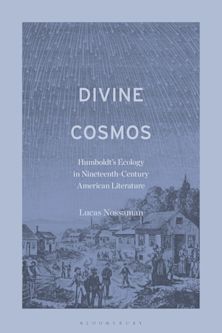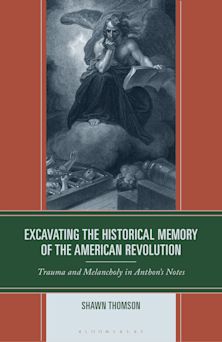- Home
- ACADEMIC
- Literary Studies
- North American and Caribbean Literature
- Depictions of Home in African American Literature
You must sign in to add this item to your wishlist. Please sign in or create an account
Description
In Depictions of Home in African American Literature, Trudier Harris analyzes fictional homespaces in African American literature from those set in the time of slavery to modern urban configurations of the homespace. She argues that African American writers often inadvertently create and follow a tradition of portraying dysfunctional and physically or emotionally violent homespaces. Harris explores the roles race and religion play in the creation of homespaces and how geography, space, and character all influence these spaces. Although many characters in African American literature crave safe, happy homespaces and frequently carry such images with them through their mental or physical migrations, few characters experience the formation of healthy homespaces by the end of their journeys. Harris studies the historical, cultural, and literary portrayals of the home in works from well-known authors such as Richard Wright, James Baldwin, Toni Morrison, and August Wilson as well as lesser-studied authors such as Daniel Black, A.J. Verdelle, Margaret Walker, and Dorothy West.
Table of Contents
Chapter 1: Movement, Migration, and Homelessness
Margaret Walker's Jubilee (1966)
Chapter 2: Where I Live is Not Home
James Baldwin, Go Tell It on the Mountain (1953); Toni Morrison, The Bluest Eye (1970);
Suzan-Lori Parks, Topdog/Underdog (2001)
Chapter 3: Lonely Place, Unwelcoming Space
A. J. Verdelle's The Good Negress (1995)
Chapter 4: A Mother's Desire, A Son's Hell
Daniel Black's Perfect Peace (2010)
Chapter 5: A Mother's Domination, A Family's Submission
Dorothy West's The Living Is Easy (1940)
Chapter 6: Wrapped in Imagination and Desire
Countee Cullen, “Heritage”; Ann Petry, “Mother Africa”; Lorraine Hansberry, A Raisin in the Sun (1959); Alice Walker, “Everyday Use” (1973); Toni Morrison, Song of Solomon (1977); Phyllis Alesia Perry, Stigmata (1998); Yaa Gyasi, Homegoing (2016); James Weldon Johnson; Sterling A. Brown
Conclusion: While We're in This Place . . .
Product details
| Published | Dec 06 2021 |
|---|---|
| Format | Ebook (Epub & Mobi) |
| Edition | 1st |
| Extent | 232 |
| ISBN | 9781793649645 |
| Imprint | Lexington Books |
| Publisher | Bloomsbury Publishing |
About the contributors
Reviews
-
Harris has made a long, distinguished career of taking on topics within African American literature that seem simple enough until she unpacks the messy complexities and reveals them to be much more difficult and engaging. This latest work examines the notion of home in African American literature, and Harris quickly demonstrates that home is often not where the heart is but a dysfunctional space, riven with violence and pain. It is also filled with memory and belief systems that sustain one and it is portable in ways that go beyond the traditional definitions of “homespaces” one often relies on. Here home also becomes a space of imagination and migration. Harris reveals the fraught, complicated rendering that creates these spaces in works by such writers as Margaret Walker, James Baldwin, Toni Morrison, A. J. Verdelle, Dorothy West, Countee Cullen, and Yaa Gyasi, crossing time periods and genres to catalog distinct variations while revealing the racial and religious structures that shape people's views. Harris provides an important corrective to views of home, and her work will particularly interest scholars of American literature and Black studies. Essential. Upper-division Undergraduates, Graduate Students, Researchers/Faculty.
Choice Reviews
-
Trudier Harris's Depictions of Home in African American Literature is destined to have an impact on the shaping of literary and cultural discourses and on the teaching of African American literature in the future. Harris makes a nuanced, persuasive case for re-examining the tension between idealized notions of home and the actual use of the concept in the production of literary genres. Analyzing works by well-known and lesser-known writers, Harris illuminates how history, race, power, and economics influence the understanding of home as space and place. Thus, the book makes an important contribution to scholarship and pedagogy.
Jerry W. Ward Jr., author of The Katrina Papers: A Journal of Trauma and Recovery
-
Has the field of African American literary studies ever produced a more thoughtful, prolific reader-scholar than Trudier Harris? Article after article, book after book, decade after decade, she has consistently pursued a fantastic quest to illuminate the underpinnings of black artistic writing. In Depictions of Home in African American Literature, the newest phase of her journey, she charts explorations of homespaces in works by James Baldwin, Countee Cullen, Toni Morrison, Suzan-Lori Parks, A. J. Verdelle, Margaret Walker, and several others. Harris demonstrates that home, a complex and in many cases unsettling place in the literature, offers wonderous creative opportunities for black writers.
Howard Rambsy II, author of Bad Men: Creative Touchstones of Black Writers
-
Depictions of Home in African American Literature is a moving literary experience about home in black life and culture. Trudier Harris, in what amounts to a corporate testimony, rhetorically shouts out that since enslaved Africans arrived in America, home has not been a hospitable environment or haven of shelter, of happiness or love; rather it has been the site of a topography of pain. It has been a constant reminder of black people's degraded condition: containment, confinement, control. This situation impedes the individual from attaining maturity at all levels. Instead of the mythologized American dream, home is a reminder of the American nightmare.
Dolan Hubbard, author of The Sermon and the African American Literary Imagination
-
In the latest of her always illuminating and stimulating studies of important topics in African American literature, Trudier Harris shows us what “home” means for a wide range of writers. As impressive as is the breadth of coverage of this book – writers canonical to those almost unknown – are the elegant and insightful readings of what home has meant as a domestic space, an imagined and longed for place of origin, and a desired and anticipated haven of refuge and solace. Harris reveals how complicated those representations have been, how deep is the yearning for a safe haven in a heartless world and how profound the tensions that can and often do frustrate it.
Ashraf H. A. Rushdy, author of Neo-Slave Narratives and Philosophies of Gratitude
-
In Depictions of Home in African American Literature, Trudier Harris draws upon her expansive knowledge of African American fiction, poetry and drama to trace recurring yet problematic representations of both real and imagined homespaces. Her painstaking and probing analyses of "home" in selected works that span from James Baldwin's Go Tell It on the Mountain to Dorothy West's The Living Is Easy deconstruct the familiar archetypal quest for home, ponder the role of slavery, and argue the inability of African American writers to suppress the mimetic urge "to follow on a path of troubling depictions." A fresh critical lens for examining both classic and lesser-known works!
Sandra G. Shannon, author of The Dramatic Vision of August Wilson

ONLINE RESOURCES
Bloomsbury Collections
This book is available on Bloomsbury Collections where your library has access.


































